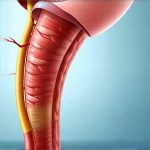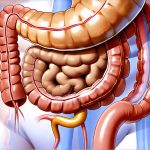Our gastrointestinal (GI) system is often taken for granted until something goes wrong. It’s the workhorse behind processing food, absorbing nutrients, and eliminating waste – all essential functions for maintaining overall health. Many common digestive complaints, like occasional bloating or heartburn, are easily managed with over-the-counter remedies or lifestyle adjustments. However, when these symptoms become persistent, severe, or accompanied by other concerning signs, it may signal the need for a more in-depth investigation of your GI tract. Ignoring prolonged issues can lead to chronic conditions and significantly impact quality of life; therefore recognizing when to seek professional help is crucial.
The digestive system is remarkably complex, involving numerous organs—esophagus, stomach, small intestine, large intestine, liver, gallbladder, and pancreas—all working in orchestrated harmony. Disruptions anywhere along this pathway can manifest as a wide range of symptoms. It’s important to remember that the GI tract isn’t isolated; it’s interconnected with other body systems, and digestive problems can sometimes be indicators of issues elsewhere. This article will explore signs suggesting you might benefit from a deeper GI investigation, helping you understand when to move beyond self-treatment and consult a healthcare professional. We’ll focus on recognizing patterns, understanding potential causes, and knowing what types of investigations may be recommended.
Recognizing Persistent Digestive Symptoms
Persistent digestive symptoms are often the first clue that something more than occasional discomfort is occurring. It’s not just about how you feel but also how long these feelings last and whether they interfere with your daily life. A single instance of heartburn after a spicy meal isn’t cause for alarm, but experiencing it several times a week, even with dietary changes, definitely warrants attention. Similarly, occasional bloating is normal; however, chronic, debilitating bloating that doesn’t respond to typical remedies like gas medication or dietary adjustments should be investigated. Why you may feel bloated after only a small meal might also provide some insight into this.
These persistent symptoms can take many forms. Frequent abdominal pain – not just discomfort but actual pain – is a significant indicator. This pain might be localized (in one area) or more diffuse, and its character can vary—cramping, sharp, dull ache, etc. Changes in bowel habits are equally important to note. These include persistent diarrhea, constipation that doesn’t respond to lifestyle changes like increased fiber intake and hydration, or a noticeable change in stool consistency or appearance. Blood in your stool – whether visible or detected during testing – is always a reason to seek medical attention immediately.
Beyond the primary symptoms, secondary signs can also point towards underlying GI issues. These include unintentional weight loss, fatigue that doesn’t improve with rest, and nausea or vomiting that’s not related to an obvious cause like food poisoning. It’s essential to track these symptoms over time – keeping a detailed log of what you eat, when symptoms occur, and their severity can be immensely helpful for your doctor during diagnosis. Don’t underestimate the importance of communication; clearly articulating your symptoms and concerns is crucial for accurate assessment. If you experience unexplained discomfort, it may be worth exploring how to tell if you need a gut detox.
The Role of Lifestyle and When To Seek Help
Lifestyle factors play a significant role in digestive health. Diet, stress levels, exercise habits, and even sleep quality can all impact how well our GI system functions. Many mild digestive issues can be effectively managed through lifestyle modifications – adopting a balanced diet rich in fiber, staying hydrated, managing stress through techniques like yoga or meditation, and getting regular physical activity. However, when these changes fail to provide relief, it’s time to consider a deeper investigation.
There’s a distinct difference between symptoms that respond to self-care and those that persist despite consistent efforts at improvement. If you’ve tried dietary adjustments (like eliminating trigger foods), increased your water intake, reduced stress, and still experience significant digestive problems, it’s unlikely the issue is solely lifestyle-related. Furthermore, any sudden or dramatic change in symptoms should prompt immediate medical attention. For example, a sudden onset of severe abdominal pain, especially if accompanied by fever or vomiting, could indicate a serious condition like appendicitis or bowel obstruction.
It’s also important to consider your family history. A family history of GI disorders – such as inflammatory bowel disease (IBD), celiac disease, or colon cancer – increases your risk of developing similar conditions. If you have a strong family history, even mild digestive symptoms should be taken seriously and investigated promptly. Proactive screening is often recommended for individuals with a genetic predisposition to these diseases. Signs that your gut microbiome needs a reset may also offer preventative strategies.
Diagnostic Tools and Procedures
When a healthcare professional suspects an underlying GI issue, they’ll likely recommend one or more diagnostic tests to determine the cause. These tools vary in complexity and invasiveness, depending on the suspected condition.
- Endoscopy: This procedure involves inserting a thin, flexible tube with a camera attached into the esophagus, stomach, or duodenum (the first part of the small intestine). It allows for direct visualization of these organs, enabling doctors to identify inflammation, ulcers, or other abnormalities. Biopsies can also be taken during endoscopy for further analysis.
- Colonoscopy: Similar to an endoscopy, a colonoscopy involves inserting a flexible tube with a camera into the rectum and colon. This is primarily used to screen for colon cancer and detect polyps (precancerous growths). As with endoscopy, biopsies can be performed if necessary.
- Stool Tests: These tests analyze stool samples for signs of infection, inflammation, or malabsorption. They can help identify bacterial infections, parasites, blood, and other indicators of GI problems.
Beyond these common procedures, other diagnostic tools may include: – Blood tests to assess overall health and detect markers of inflammation. – Imaging tests like CT scans or MRIs to visualize the abdominal organs in detail. – Breath tests to diagnose conditions like lactose intolerance or small intestinal bacterial overgrowth (SIBO). The choice of diagnostic tests will depend on your specific symptoms, medical history, and the doctor’s initial assessment. You might also consider signs you may need digestive enzyme supplements to support digestion.
Understanding Inflammatory Bowel Disease (IBD)
Inflammatory bowel disease (IBD) encompasses two main conditions: Crohn’s disease and ulcerative colitis. Both involve chronic inflammation of the digestive tract, but they differ in terms of location and severity. Crohn’s disease can affect any part of the GI tract, from the mouth to the anus, often involving deep layers of the intestinal wall. Ulcerative colitis, on the other hand, primarily affects the colon and rectum, limited to the innermost lining.
Symptoms of IBD can be variable and may come and go over time. Common symptoms include persistent diarrhea, abdominal pain, rectal bleeding, weight loss, and fatigue. However, some individuals experience milder symptoms that are easily mistaken for less serious conditions. Diagnosing IBD typically involves a combination of endoscopy, colonoscopy, imaging tests, and blood tests to assess inflammation markers. Early diagnosis and treatment are crucial for managing IBD effectively and preventing complications.
Recognizing Celiac Disease and Food Intolerances
Celiac disease is an autoimmune disorder triggered by gluten – a protein found in wheat, barley, and rye. When someone with celiac disease consumes gluten, it causes damage to the small intestine, leading to malabsorption of nutrients. Symptoms can vary widely, ranging from digestive issues like diarrhea, bloating, and abdominal pain to non-digestive symptoms such as fatigue, anemia, skin rashes, and neurological problems. Diagnosis involves blood tests to detect antibodies associated with celiac disease, followed by an endoscopy with a biopsy of the small intestine to confirm the diagnosis.
Food intolerances, unlike celiac disease, don’t involve an autoimmune response or damage to the intestinal lining. Instead, they result from difficulty digesting certain foods. Lactose intolerance is a common example, where individuals lack sufficient lactase enzyme to break down lactose (milk sugar). Symptoms typically include bloating, gas, and diarrhea after consuming dairy products. Diagnosing food intolerances often involves elimination diets – removing suspected trigger foods from the diet and observing whether symptoms improve. It’s important to differentiate between celiac disease and food intolerances; while both can cause digestive issues, their underlying mechanisms and long-term health implications are different. Seeking guidance from a healthcare professional or registered dietitian is essential for accurate diagnosis and appropriate management. If you experience chronic discomfort, consider signs you may have a nightshade sensitivity. You might also want to explore why you might feel relief from bloating after crying as a potential coping mechanism. Finally, it’s important to understand why you may feel bloated after only a small meal.


















